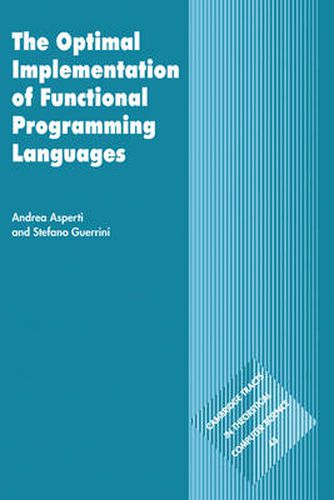Readings Newsletter
Become a Readings Member to make your shopping experience even easier.
Sign in or sign up for free!
You’re not far away from qualifying for FREE standard shipping within Australia
You’ve qualified for FREE standard shipping within Australia
The cart is loading…






All traditional implementation techniques for functional languages (mostly based on supercombinators, environments or continuations) fail to avoid useless repetition of work; they are not ‘optimal’ in their implementation of sharing, often causing a catastrophic, exponential explosion in reduction time. Optimal reduction is an innovative graph reduction technique for functional expressions, introduced by Lamping in 1990, that solves the sharing problem. This book, the first in the subject, is a comprehensive account by two of its leading exponents. Practical implementation aspects are fully covered as are the mathematical underpinnings of the subject. The relationship to the pioneering work of Levy and to Girard’s more recent Geometry of Interaction are explored; optimal reduction is thereby revealed as a prime example of how a beautiful mathematical theory can lead to practical benefit. The book is essentially self-contained, requiring no more than basic familiarity with functional languages. It will be welcomed by graduate students and research workers in lambda calculus, functional programming or linear logic.
$9.00 standard shipping within Australia
FREE standard shipping within Australia for orders over $100.00
Express & International shipping calculated at checkout
All traditional implementation techniques for functional languages (mostly based on supercombinators, environments or continuations) fail to avoid useless repetition of work; they are not ‘optimal’ in their implementation of sharing, often causing a catastrophic, exponential explosion in reduction time. Optimal reduction is an innovative graph reduction technique for functional expressions, introduced by Lamping in 1990, that solves the sharing problem. This book, the first in the subject, is a comprehensive account by two of its leading exponents. Practical implementation aspects are fully covered as are the mathematical underpinnings of the subject. The relationship to the pioneering work of Levy and to Girard’s more recent Geometry of Interaction are explored; optimal reduction is thereby revealed as a prime example of how a beautiful mathematical theory can lead to practical benefit. The book is essentially self-contained, requiring no more than basic familiarity with functional languages. It will be welcomed by graduate students and research workers in lambda calculus, functional programming or linear logic.